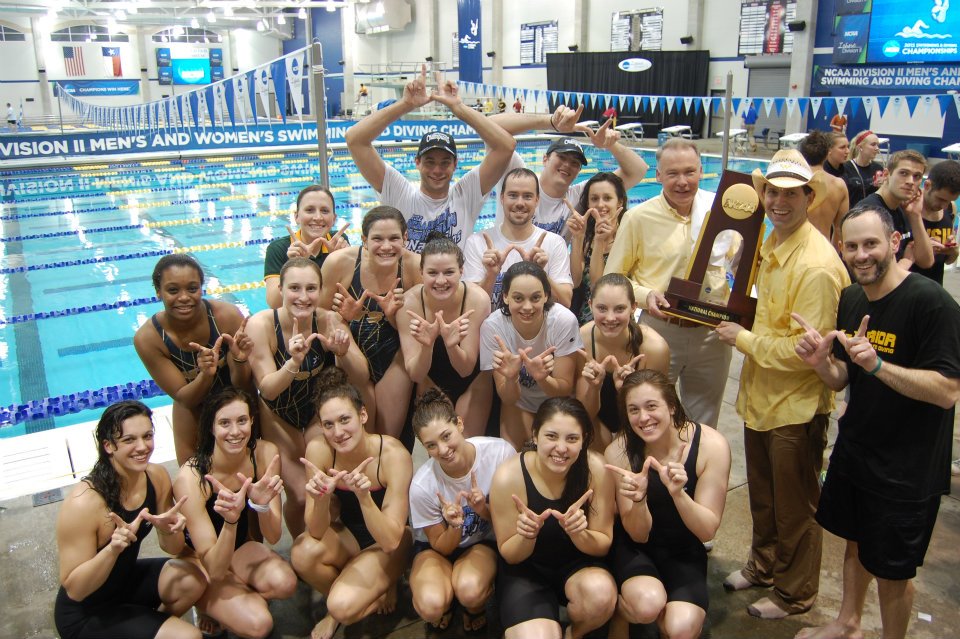Excessive training does not guarantee better performance in competitive swimming, research suggests

Gloria Martinez Pérez is a multi-international champion in competitive swimming. It might surprise those who know her and know of her impressive career to learn that when she was a kid growing up in her native Merida, Spain, she had a fear of the open water.
“I was terrified and my mom wanted me to get over this fear, so she signed me up for swim lessons when I was 6 years old,” she said.
Needless to say, the lessons paid off. Not only did Martinez Pérez learn she had nothing to fear, but she quickly developed an affinity for the water. Later, she joined a swim club, and by the age of 12, she had competed in her first junior national championship. There she discovered how much she loved the competitive nature of the sport.
“Once I started getting into a higher level of the sport, competing all over the country and winning national titles, I got an offer from the Wayne State University swim team to come and compete for them on a full scholarship,” she said.
Martinez Pérez hopped on a plane and came to Detroit. Starting college in a foreign country can be a challenge, but she also had a significant language barrier.
“My English was basic enough to where I could barely have a conversation. The university wanted me for athletic reasons but the academic part took a lot of time and effort, so I could pass my classes and stay eligible to compete. I am not going to lie and say that it wasn’t challenging, but I also had a lot of help.”
Her coaches and advisors supported her every step of the way, and in 2015 she earned her bachelor’s in kinesiology.
During her undergrad, she made history as a four-time national (NCAA) champion, earned 18 All-American certificates, set two individual school records and two relay school records. She was also part of the 2012 NCAA title that women’s competitive swimming and diving won as a team.
Martinez Pérez went on to earn her master’s, also in kinesiology, and served as a graduate assistant coach for the WSU women’s swim team. She was elevated to full-time assistant coach in September 2021 and started her Ph.D. the same semester.
Quantity vs quality in competitive swimming
Sports were brought to a halt with all other campus activities when the pandemic hit in March 2020. It quickly became clear COVID-19 was going nowhere fast, and as a former swimmer and now coach, Martinez Pérez was left wondering how the lockdowns and isolation would impact the team once the pool reopened.
She posed the question to Tamara Hew-Butler, Ph.D., her advisor and associate professor of exercise and sports science in the College of Education. The lab formulated a study to test their hypothesis that pandemic disruptions and fewer training hours would negatively impact athlete health and performance.
They compared the performance times of 25 WSU male and female swimmers who competed in regional championships during pandemic (2020-2021) and non-pandemic (2019-2020) seasons. The swimmers were categorized into three groups: sprinters, mid-distance, and long-distance.
Pandemic protocols resulted in swimmers spending a significantly less amount of time training throughout 2020-2021, but among the three categories, only long-distance swimming performance was markedly negatively impacted. In fact, sprinters performed slightly better than in the non-pandemic season.
Martinez Pérez said the results conflict with the age-old presumption that more training leads to better results. A misconception that can lead to overtraining, more injuries and burnout. The study reports that far fewer sports-related injuries occurred during the pandemic swim season.
“My hope is that eventually we can overcome the big debate about quantity vs quality in swim training,” she said. “With that, hopefully we can also achieve less injuries and healthier athletes, but at the same time making them the best they can be.”
Regaining a sense of control
In addition to performance in competitive swimming, the study measured season retention.
WSU began the 2020-2021 season with 26 male and 22 female swimmers. 23% of them voluntarily opted out by the end of the season. No swimmers opted out of 2019-2020.
The study names heighted psychological stress as the primary culprit, citing a pre-pandemic review that reported pressure and lack of fun as the most common reasons swimmers drop out—suggesting the reasons are within swimmers’ control, and the lack of control felt during the pandemic resulted in a markedly higher dropout rate.
Martinez Pérez suggests interventions, such as freely available mental health counseling, be prioritized in the future to minimize dropout rates.
COVID-19 cases were few in 2020-2021. Only three swimmers tested positive, and none reported experiencing long-term symptoms.
Martinez Pérez took all that she’d learned going into the 2021-2022 swim season.
“Swim Head Coach Sean Peters, who has always supported me in my research, adjusted our training after what we found in our results, and we were able to achieve better performances across all groups of training without overtraining,” Martinez Pérez said.
The pools stayed open, and in February 2022, WSU women’s swimming and diving set a school record with 20 GLIAC All-Academic Excellence honorees.
“Being able to have a full season of training and competitions was something we were looking forward to this year,” she said. “It wasn’t a perfect season, but we’re happy with the results and how the team came together to overcome everything that came our way.”